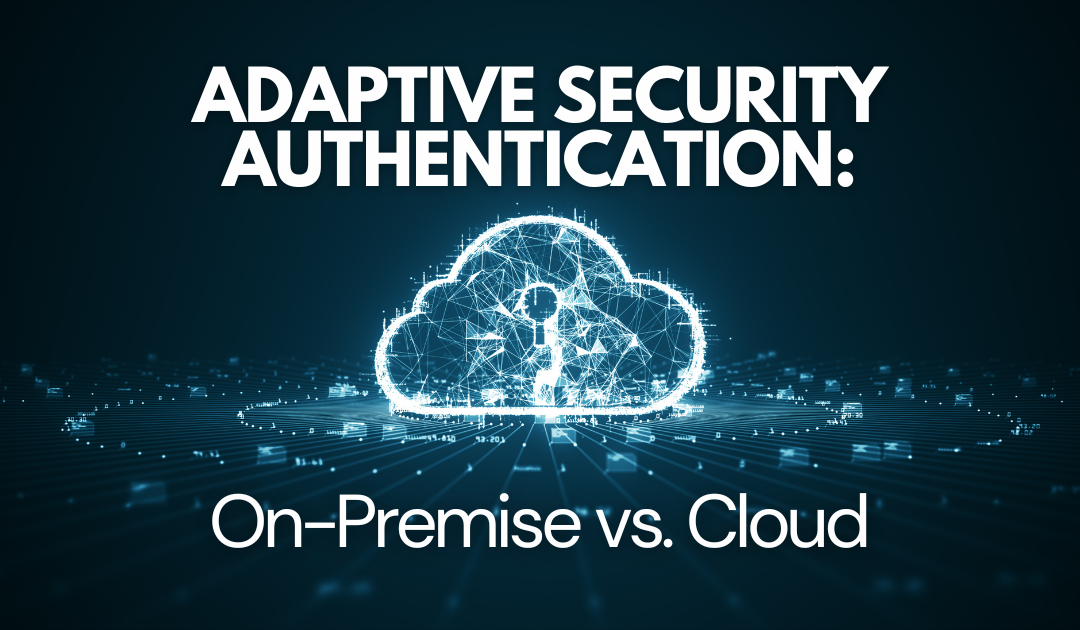In today’s digital landscape, where cyber threats continue to evolve, ensuring robust security measures is paramount. One crucial aspect of security is authentication—the process of verifying the identity of individuals accessing sensitive information or resources. Today, there a number of ways to design and implement systems for secure authentication. Today’s solutions must be able to adapt to the company’s security, privacy and operational requirements.
One aspect of this adaptive authentication concept is whether to deploy and utilize an On-Premise or Cloud deployment and what factors are typically considered.
On-Premise Authentication
On-premise authentication refers to the practice of hosting authentication systems and processes within an organization’s physical infrastructure. It involves deploying and managing authentication servers and related hardware on-site. Here are some key aspects of on-premise authentication:
- Data Control: With on-premise authentication, organizations have complete control over their authentication data. This level of control allows for customization, tailored security policies, and compliance with specific regulations.
- Direct Management: Organizations with on-premise authentication have direct control and oversight of their authentication systems. This control enables them to quickly respond to security incidents, implement updates, and enforce security policies.
- Potential Infrastructure Costs: On-premise authentication requires organizations to invest in the necessary infrastructure, including servers, hardware, and IT resources. This upfront investment can be costlier compared to cloud authentication.
Cloud Authentication
Cloud authentication, on the other hand, leverages cloud-based services to handle authentication processes. Instead of managing authentication infrastructure on-premise, organizations rely on third-party cloud service providers. Here are the key aspects of cloud authentication:
- Operational Flexibility: Cloud authentication offers flexibility, allowing organizations to easily adapt to changing authentication needs. It can also lead to other authentication solution options leveraging mobile technologies and digital authentication solutions.
- Reduced Infrastructure Overhead: By utilizing cloud-based authentication services, organizations can eliminate the need for extensive on-premise infrastructure. This reduces the burden on internal IT teams and frees up resources for other business priorities.
- Enhanced Agility and Rapid Updates: One of the key advantages of cloud authentication is the ability to apply new capabilities and updates more quickly than typical on-premise solutions. Cloud service providers regularly introduce enhancements and security patches, ensuring that authentication systems remain up-to-date. This agility enables organizations to stay current with the latest product capabilities and swiftly adapt to changing authentication requirements without the delays often associated with traditional on-premise infrastructure.
Choosing the Right Approach—Or a Hybrid
When deciding between on-premise and cloud authentication, several factors come into play. However, it is not an either/or decision in all cases. There are scenarios where you combine On-Premise and Cloud systems to create an Adaptive Authentication system. Consider the following points:
- Security Requirements: Assess your organization’s unique security requirements. If you handle highly sensitive data or have specific compliance needs, on-premise authentication may offer greater control and customization options.
- Hybrid Options: You can combine traditional on-premise authentication systems with cloud-based authentication systems. For example, you can use a card to authenticate in an on-premise system and complete a cloud-based mobile biometric authentication for two-factor authentication.
- Expertise and Resource Availability: Take into account your organization’s IT resources and expertise. On-premise authentication requires internal IT teams to manage and maintain the infrastructure. If you lack the necessary resources or expertise, cloud authentication can alleviate the burden by relying on the expertise of the cloud service provider.
Conclusion
Authentication is a critical component of a robust security strategy. On-premise authentication provides control and customization advantages, cloud authentication offers, reduced infrastructure overhead, and solution flexibility. The choice between the two approaches depends on your organization’s specific needs, resources, and security requirements.
In many cases, organizations are adopting a hybrid approach, leveraging the benefits of both on-premise and cloud authentication. This approach allows for customization, control, and compliance while taking advantage of the scalability and flexibility offered by cloud services.
Ultimately, the key is to evaluate your organization’s unique circumstances and choose an authentication approach that aligns with your security goals, resources, and long-term strategy. By doing so, you can maintain a secure and efficient authentication process that protects your valuable assets and ensures a seamless user experience.


